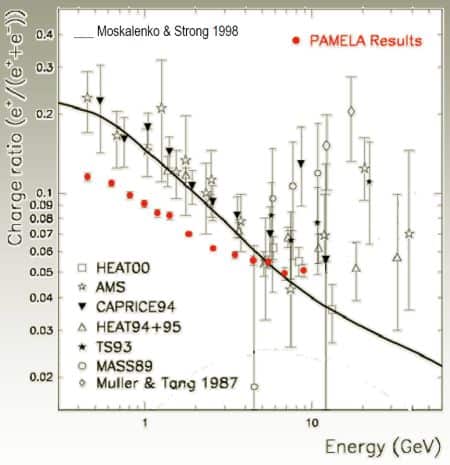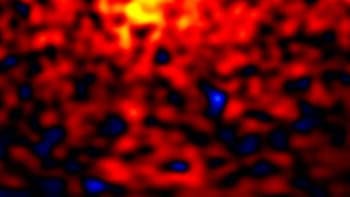By Jon Cartwright
Has a European satellite detected dark matter? That’s the question on many people’s lips who attended the recent International Conference on High-Energy Physics (ICHEP) in Philadelphia, US.
Several physicists who attended the conference have told me that Mirko Boezio, a representative of the PAMELA (Payload for Antimatter Matter Exploration and Light-nuclei Astrophysics) mission, briefly showed data depicting an excess of high-energy positrons in the ionosphere. If true, it would seem to be evidence of annihilation dark matter — an elusive substance thought to make up some five-sixths of all matter in the universe.
Unfortunately, neither Mirko Boezio nor the principal investigator of PAMELA, Piergiorgio Picozza, wants to comment on their data. They told me this was because they are planning to publish in either Nature or Science, and are therefore prohibited from talking to journalists because of those journals’ embargo policies. (Another little birdie told me that the PAMELA team is specifically aiming to submit to Nature by September, so if they fast-track it we might get to see the paper before Christmas.)
I’m going to tell you all I know about this, because frankly it’s not that much at the moment. The slides available from the ICHEP website only show positron data up to about 6 GeV, which doesn’t show much. Slightly better is this slide below from another PAMELA team member, Elena Vannucinni, who gave a presentation at the recent SLAC Summer Institute.

(Credit: PAMELA mission team)
This is a graph of the detected charge ratio — in other words, the ratio of positrons to electrons — against the particle energy. Although this PAMELA data set goes as far as 9 GeV, the satellite should be able to detect positron–electron ratios up to 270 GeV.
The line, labelled “Moskalenko and Strong 1998”, is a theoretical prediction of the positron–electron ratio without taking into account dark-matter annihilation. That means that anything above the line — anything with reasonably small error bars, that is — would indicate an unknown source of positrons, possibly dark matter. (By the way, don’t get too worried about the lower energy data falling way beneath the line — apparently Boezio said that was because the data was taken from a different time in the Sun’s 11-year solar cycle of activity.)
As I’m told, Boezio flashed up a slide like this one that had data stretching above 10 GeV while clearly going over the Moskalenko/Strong line.
“The results look okay,” Bhaskar Dutta of Texas A&M University wrote me in an email, adding: “The excess of positrons above 10 GeV is typical of dark-matter annihilation.”
Martin Perl, who shared the 1995 Nobel Prize in Physics for the discovery of the tau lepton and other contributions to lepton physics, was less keen to jump to conclusions. “If [the data] are true it would indicate an unknown source of positrons,” he wrote.
Stay tuned.



